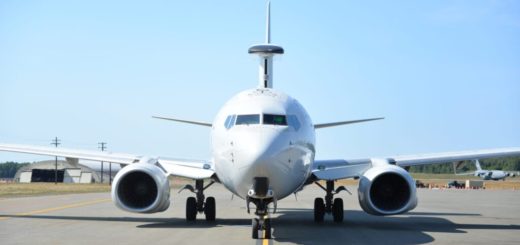China tests CH-3D armed drone to challenge Turkey’s Bayraktar TB2 in global market
{loadposition bannertop}
{loadposition sidebarpub}
Images from Chinese social media show the CH-3D armed drone undergoing flight tests, signaling Beijing’s push to rival Turkey’s Bayraktar TB2. The development could reshape drone export markets and defense partnerships across Asia, Africa, and Eastern Europe.
Images circulating on Chinese social media on Oct 6, 2025, show an AVIC CH-3D armed drone undergoing flight tests, signaling Beijing’s intent to contest the Bayraktar TB2’s grip on the medium-altitude long-endurance market. The photographs, reportedly captured at an AVIC test range and reposted from Weibo, highlight a SATCOM fairing and retractable landing gear, positioning CH-3D as a feature-rich peer to Turkey’s combat-proven TB2. The Chinese airframe is described with about 20 hours endurance, a 7,200 m service ceiling, and a cruising speed near 280 km/h, carrying precision bombs and guided missiles. The TB2, meanwhile, is a 700 kg-class workhorse with up to 27 hours endurance and a 150 kg payload, typically slinging Roketsan MAM-series munitions that have made headlines from Syria to Ukraine.Follow Army Recognition on Google News at this link
The Chinese AVIC CH-3D armed drone features SATCOM control, retractable gear, 20-hour endurance, and a 7,200 m ceiling, offering long-range precision strike and ISR capabilities (Picture source: Chinese social media).
The CH-3D’s headline differentiators are SATCOM control and retractable gear. SATCOM matters because it breaks the line-of-sight leash that confines basic TB2 operations to roughly a few hundred kilometers from the ground control station. In practice, that extends patrol boxes, enables cross-theater tasking, and reduces the vulnerability created by relay chains. Retractable gear cuts drag, translating into more efficient cruise and longer station time per kilogram of fuel, a design choice visible in the imagery and emphasized in emerging reporting. By contrast, the baseline TB2 is optimized for austere operations with fixed gear and line-of-sight control, though Baykar’s TB2S variant adds SATCOM, narrowing this gap for customers who require it.
Where raw endurance is concerned, TB2 still posts the bigger number, with documented 27-hour sorties and an operational ceiling above 7,600 m, performance that has proven sufficient for permissive to moderately contested environments. CH-3D trades a few hours of endurance for speed and comms reach. Both aircraft sit around the 700 kg MTOW class, but armament ecosystems differ. TB2’s integration of the lightweight MAM-L and MAM-C gives reliable effects against armor, artillery, and C2 nodes while limiting collateral damage, a key reason for its battlefield uptake. Chinese sources frame CH-3D as able to lug a mix of guided bombs and missiles; precise menus vary by export clearance, but the airframe’s wiring and hardpoints point to flexibility similar to earlier CH-series strike loadouts.
TB2 brings a proven kill chain that blends ISR and precision fires from rough airstrips with logistics. It excels in distributed operations, hunting artillery and air defenses, cueing ground forces, and exploiting gaps in medium-range SHORAD coverage. CH-3D’s value proposition is reach and resilience. With SATCOM as standard, operators can push the drone over the horizon for maritime surveillance, deep border security missions, or support to expeditionary task forces without stitching together multiple relays. Faster cruise helps the Chinese platform reposition between target areas and weather cells, preserving time on station where it counts. If TB2 offers a reliable scalpel for land campaigns, CH-3D aims to be a theater-wide rover for states needing longer control lines and mixed land-sea tasking.
TB2’s brand rests on visible battlefield wins and rapid deliveries that reshaped procurement decisions from the Caucasus to North Africa and Eastern Europe, establishing Turkey as a first-call supplier for budget-conscious militaries. China is targeting the same buyers with a package that promises beyond-line-of-sight control and competitive pricing under AVIC’s state-backed umbrella, leveraging fewer political strings and broader financing options. If CH-3D proves reliable in testing and early foreign service, Beijing could peel away customers who want SATCOM-enabled strike and ISR without moving up to heavier, pricier classes. The next twelve months will likely hinge on who can show credible combat telemetry, firm integration roadmaps, and dependable sustainment, metrics that have historically favored Baykar but that AVIC is now explicitly contesting.

{loadposition bannertop}
{loadposition sidebarpub}
Images from Chinese social media show the CH-3D armed drone undergoing flight tests, signaling Beijing’s push to rival Turkey’s Bayraktar TB2. The development could reshape drone export markets and defense partnerships across Asia, Africa, and Eastern Europe.
Images circulating on Chinese social media on Oct 6, 2025, show an AVIC CH-3D armed drone undergoing flight tests, signaling Beijing’s intent to contest the Bayraktar TB2’s grip on the medium-altitude long-endurance market. The photographs, reportedly captured at an AVIC test range and reposted from Weibo, highlight a SATCOM fairing and retractable landing gear, positioning CH-3D as a feature-rich peer to Turkey’s combat-proven TB2. The Chinese airframe is described with about 20 hours endurance, a 7,200 m service ceiling, and a cruising speed near 280 km/h, carrying precision bombs and guided missiles. The TB2, meanwhile, is a 700 kg-class workhorse with up to 27 hours endurance and a 150 kg payload, typically slinging Roketsan MAM-series munitions that have made headlines from Syria to Ukraine.
Follow Army Recognition on Google News at this link
The Chinese AVIC CH-3D armed drone features SATCOM control, retractable gear, 20-hour endurance, and a 7,200 m ceiling, offering long-range precision strike and ISR capabilities (Picture source: Chinese social media).
The CH-3D’s headline differentiators are SATCOM control and retractable gear. SATCOM matters because it breaks the line-of-sight leash that confines basic TB2 operations to roughly a few hundred kilometers from the ground control station. In practice, that extends patrol boxes, enables cross-theater tasking, and reduces the vulnerability created by relay chains. Retractable gear cuts drag, translating into more efficient cruise and longer station time per kilogram of fuel, a design choice visible in the imagery and emphasized in emerging reporting. By contrast, the baseline TB2 is optimized for austere operations with fixed gear and line-of-sight control, though Baykar’s TB2S variant adds SATCOM, narrowing this gap for customers who require it.
Where raw endurance is concerned, TB2 still posts the bigger number, with documented 27-hour sorties and an operational ceiling above 7,600 m, performance that has proven sufficient for permissive to moderately contested environments. CH-3D trades a few hours of endurance for speed and comms reach. Both aircraft sit around the 700 kg MTOW class, but armament ecosystems differ. TB2’s integration of the lightweight MAM-L and MAM-C gives reliable effects against armor, artillery, and C2 nodes while limiting collateral damage, a key reason for its battlefield uptake. Chinese sources frame CH-3D as able to lug a mix of guided bombs and missiles; precise menus vary by export clearance, but the airframe’s wiring and hardpoints point to flexibility similar to earlier CH-series strike loadouts.
TB2 brings a proven kill chain that blends ISR and precision fires from rough airstrips with logistics. It excels in distributed operations, hunting artillery and air defenses, cueing ground forces, and exploiting gaps in medium-range SHORAD coverage. CH-3D’s value proposition is reach and resilience. With SATCOM as standard, operators can push the drone over the horizon for maritime surveillance, deep border security missions, or support to expeditionary task forces without stitching together multiple relays. Faster cruise helps the Chinese platform reposition between target areas and weather cells, preserving time on station where it counts. If TB2 offers a reliable scalpel for land campaigns, CH-3D aims to be a theater-wide rover for states needing longer control lines and mixed land-sea tasking.
TB2’s brand rests on visible battlefield wins and rapid deliveries that reshaped procurement decisions from the Caucasus to North Africa and Eastern Europe, establishing Turkey as a first-call supplier for budget-conscious militaries. China is targeting the same buyers with a package that promises beyond-line-of-sight control and competitive pricing under AVIC’s state-backed umbrella, leveraging fewer political strings and broader financing options. If CH-3D proves reliable in testing and early foreign service, Beijing could peel away customers who want SATCOM-enabled strike and ISR without moving up to heavier, pricier classes. The next twelve months will likely hinge on who can show credible combat telemetry, firm integration roadmaps, and dependable sustainment, metrics that have historically favored Baykar but that AVIC is now explicitly contesting.






